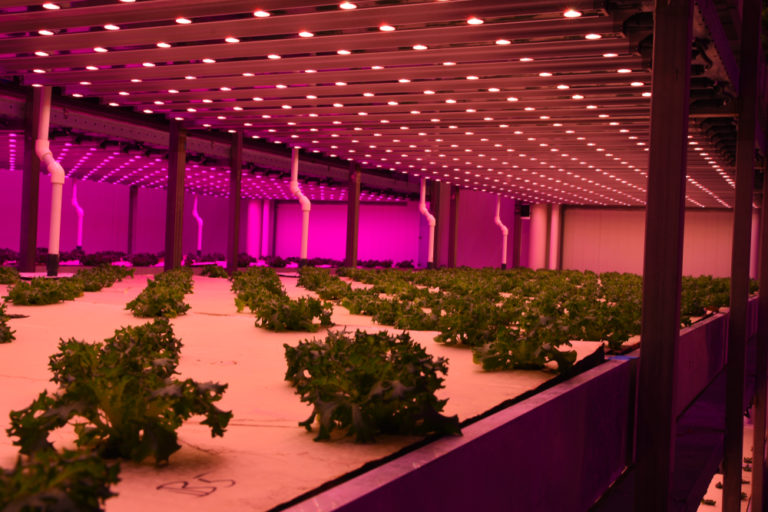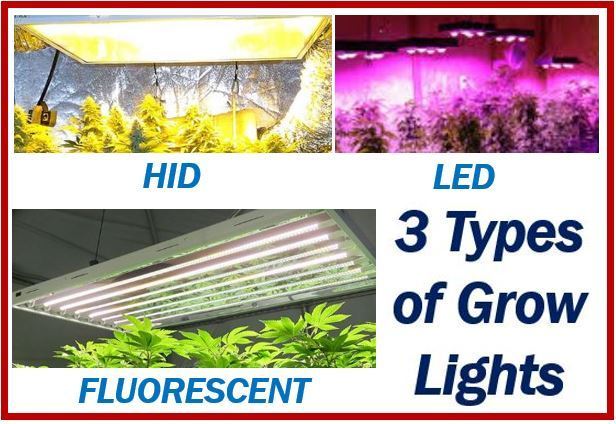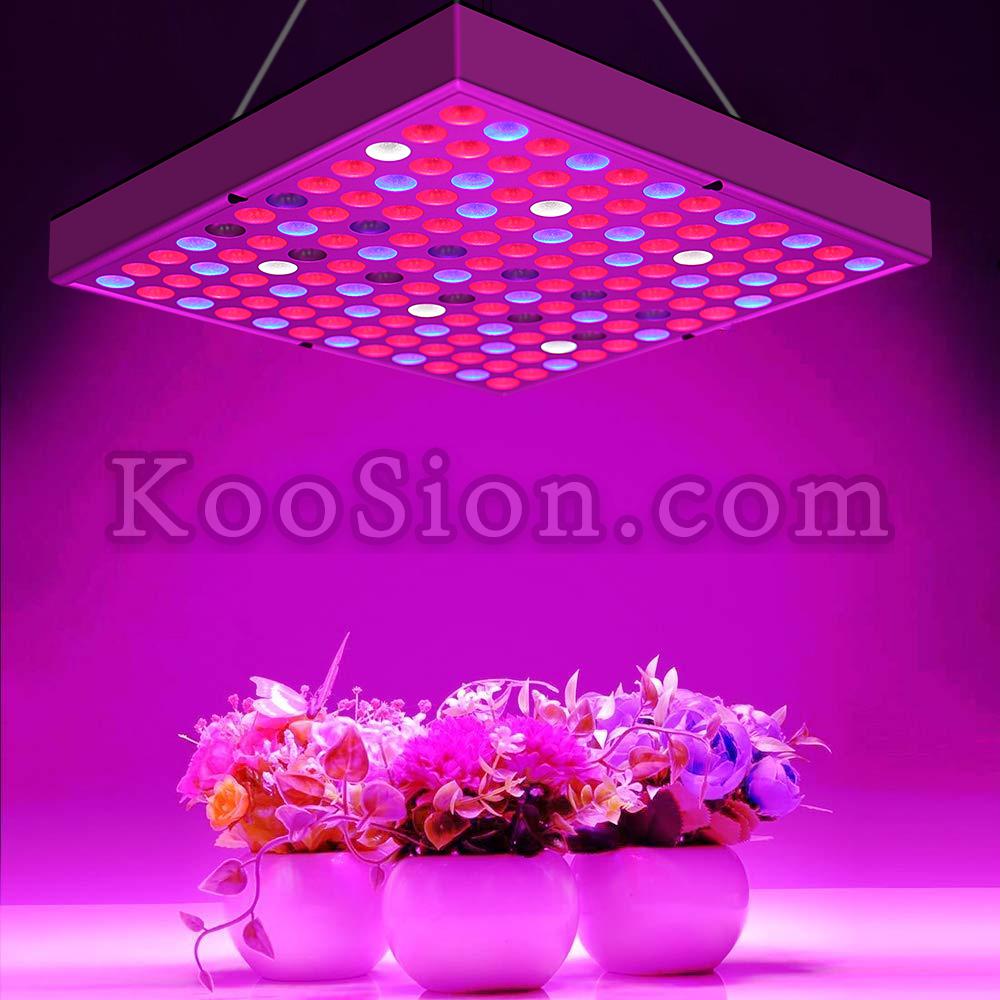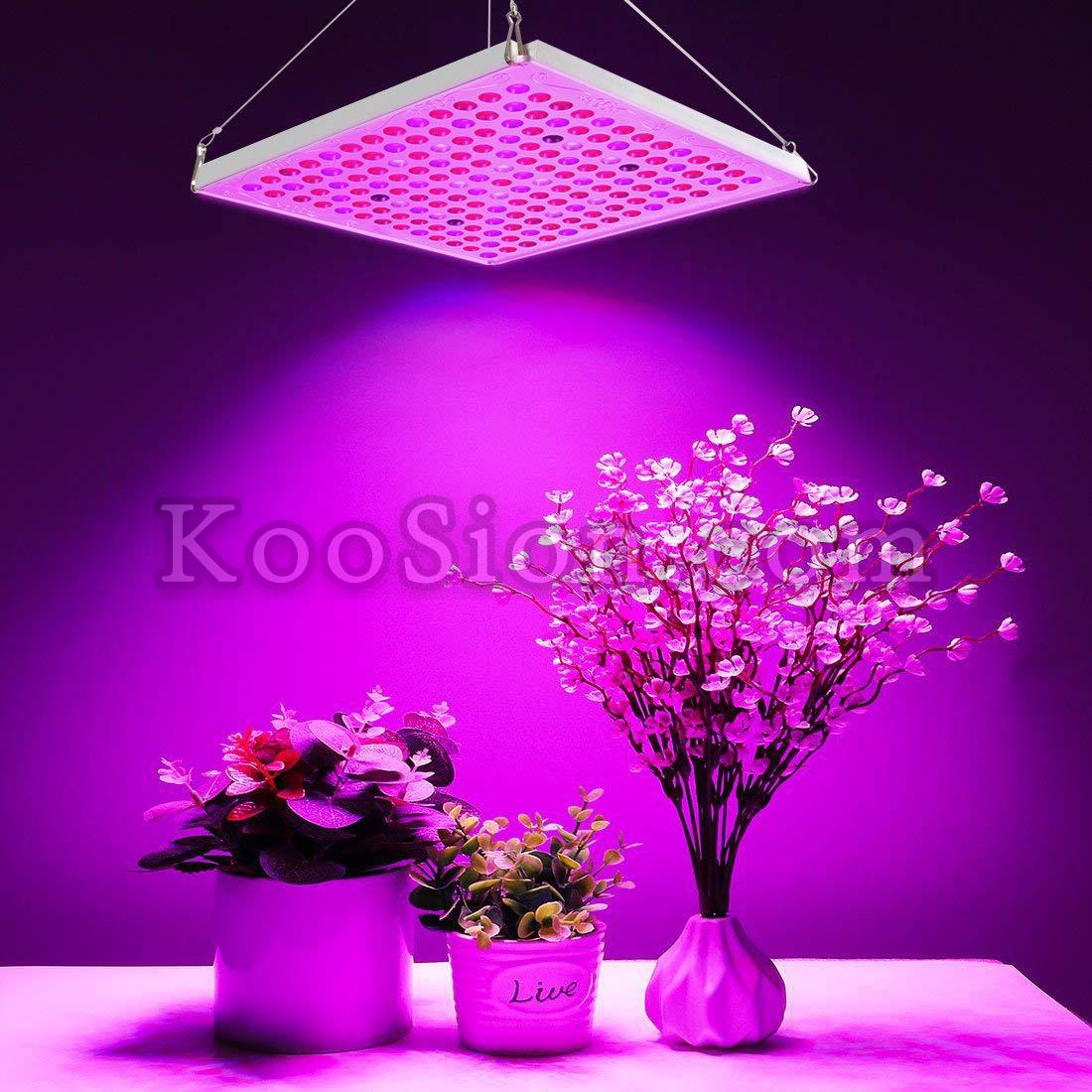Vertical or indoor farming is increasingly heralded as the future of modern agriculture. While there is no established economics of vertical farming, the increasing amount of investment in large scale vertical farming by several large indoor farming companies is a good step forward. These companies have been able to raise millions of dollars to expand their current facilities and establish new ones. (To read more about the economics and finance of indoor farming, a premier source is Agfunder.)
Fundamental to the creation of a perfect indoor farming environment for both small and large operations is the availability of affordable, sophisticated lighting technologies. In fact, there are many different types of grow lights. Let’s take a closer look.

What Are Grow Lights?
In its simplest definition, a grow light is an artificial source of light, commonly an electric light, which is designed to stimulate the growth of plants by emitting an electromagnetic spectrum perfect for photosynthesis. Such lights are commonly used in applications where there is a lack of natural light or additional light is required. Say for example, during the winter months, grow lights can be used to supply additional hours of light for plant growth. It helps grow vegetables and fruits grow indoors as well.
In large scale, indoor farming operations, grow lights can completely replace direct sunlight. However, grow lights don’t always have to mimic sunlight exactly. In many applications, they can outperform sunlight.
Types of Grow Lights
There are three basic types of grow lights available for indoor urban farming: Fluorescent grow lights, HPS or HID grow lights, and LED grow lights.
1. Fluorescent Grow Lights. Fluorescent grow lights are used for growing herbs and vegetables indoors. They are two types, including fluorescent tubes and Compact Fluorescent Lights (CFLs). Fluorescent tubes come in many different intensities. They last longer and are more energy efficient than incandescent bulbs--the common bulbs that have been lighting homes for decades. Fluorescent bulbs are very thin and can easily fit into small spaces. As for downsides, they require a ballast to regulate current and the tubes require a stand, rather than a conventional socket.
Such requirements can add to the cost of installation.

On the other hand, CFLs have become more common in household usage and not just in indoor urban farming. CFLs use only 20 to 30% of the energy consumed by traditional incandescent bulbs and their lifespan is six to eight times longer. They are by far the cheapest among all three major types of grow lights. One notable advantage with CFL bulbs is they don’t emit excess heat, allowing farmers to keep the lights closer to the plants. This low heat feature makes it very energy efficient as well.
2. HPS Grow Lights: High-Pressure Sodium (HPS) lights have grown in popularity and are overtaking fluorescent tubes and bulbs. These lights are more common among commercial and experienced indoor growers and the technology behind them is well established, already over 75 years old.
The problem with HPS is that it produces a considerable amount of heat. As such, you must keep the lights a good distance from the plants. They require a significant amount of investment to set up and maintain. Therefore, HPS is not recommended for small growers.
3. LED Grow Lights: While the beginnings of LED technology first emerged in the early 1900s, the red and blue LEDs perfect for indoor farming began being used just prior to the 2000s.
LED grow lights are the most energy efficient among all three basic types of grow lights. These sources can be placed farther from plants while still producing enough light without consuming much energy. CFLs are almost 50% less efficient than LED grow lights. The heat production by LED grow lights is near zero. Most importantly, LED performs best to create a perfect indoor environment to create almost any kind of food.
The cost of LED light bulbs is higher than other two types, however. Additionally, workers working in indoor farms need to use eye protection as LEDs can be harmful to human eyes.
Best Fits Based on Farming or Farmer Type
If you are new to indoor farming, CFL is the best fit. It is widely available in many wavelengths, and CFL is perfect for use at all stages of plant development. Less heat generated by CFLs too is a good advantage for small farmers.
But if you want to grow foods in large scale, LEDs can be good long term investment as they are the most energy efficient. The use of LEDs can reduce energy use by up to 70%. In many ways, LED grow lights are way better than daylight for plants.
The Role of LED Grow Lights in Vertical Farming
The advances in LED technology have made it possible to create the perfect environment to grow vegetables at a large scale with shorter growing cycles and higher yields. In fact, LED is becoming the de facto source of lighting to create the most advantageous controlled environment for indoor farming. The advances in LED technologies have made indoor cultivation of vegetables very energy-efficient.

While most indoor farms use LEDs these days, many are yet to completely convert to LEDs due to the relatively high price tag. But the gradually decreasing prices of LEDs should help those farmers convert to LED as it offers a significant energy cost saving.
Things Indoor Farmers Must Know About LED Grow Lights
Lighting is the most important aspect of creating a perfect indoor farming environment. It can be a "make or break" decision for your indoor farm. So, it’s highly recommended that you spend enough time planning and designing the layout of your plants and lights. The use of CAD (Computer Aided Design) is highly recommended. The design should be optimized so that no light will be wasted.
There are unique techniques to increase the use of available light in a room. As white surfaces reflect lights, make sure you have as many white surfaces around as it is possible. Any light-colored surfaces that reflect lights will work the same way. Additionally, you can make use of light movers to distribute the light to a wider area.
Finally, it is important to keep abreast of the latest trends and technologies as they continue to evolve in the indoor farming sector. Use a systematic approach, while keeping pen to new opportunities.

Contact: Starry
Phone: +86-1-392-655-9500
E-mail: info@koosion.com
Add: 1807# Baoan Ave, Baoan District, Shenzhen City, China